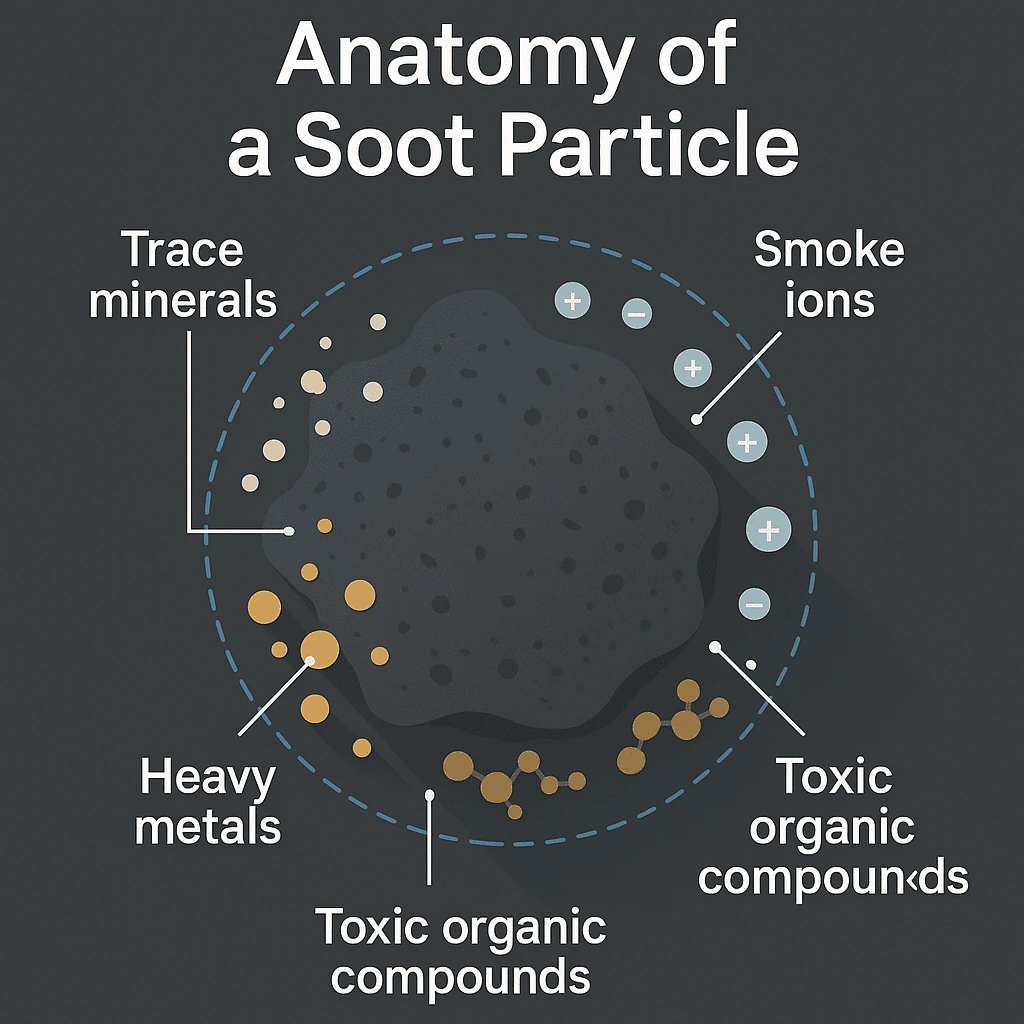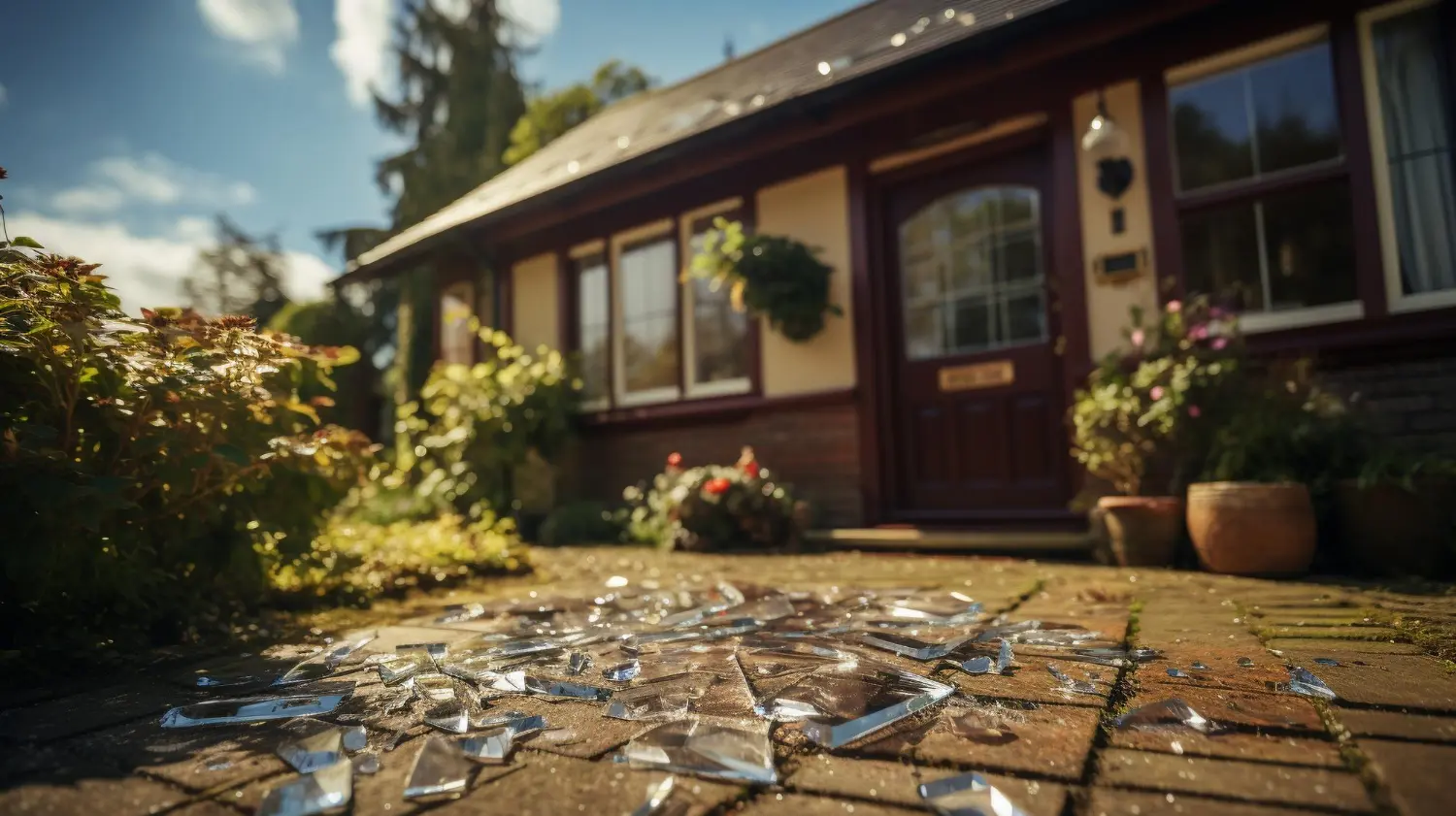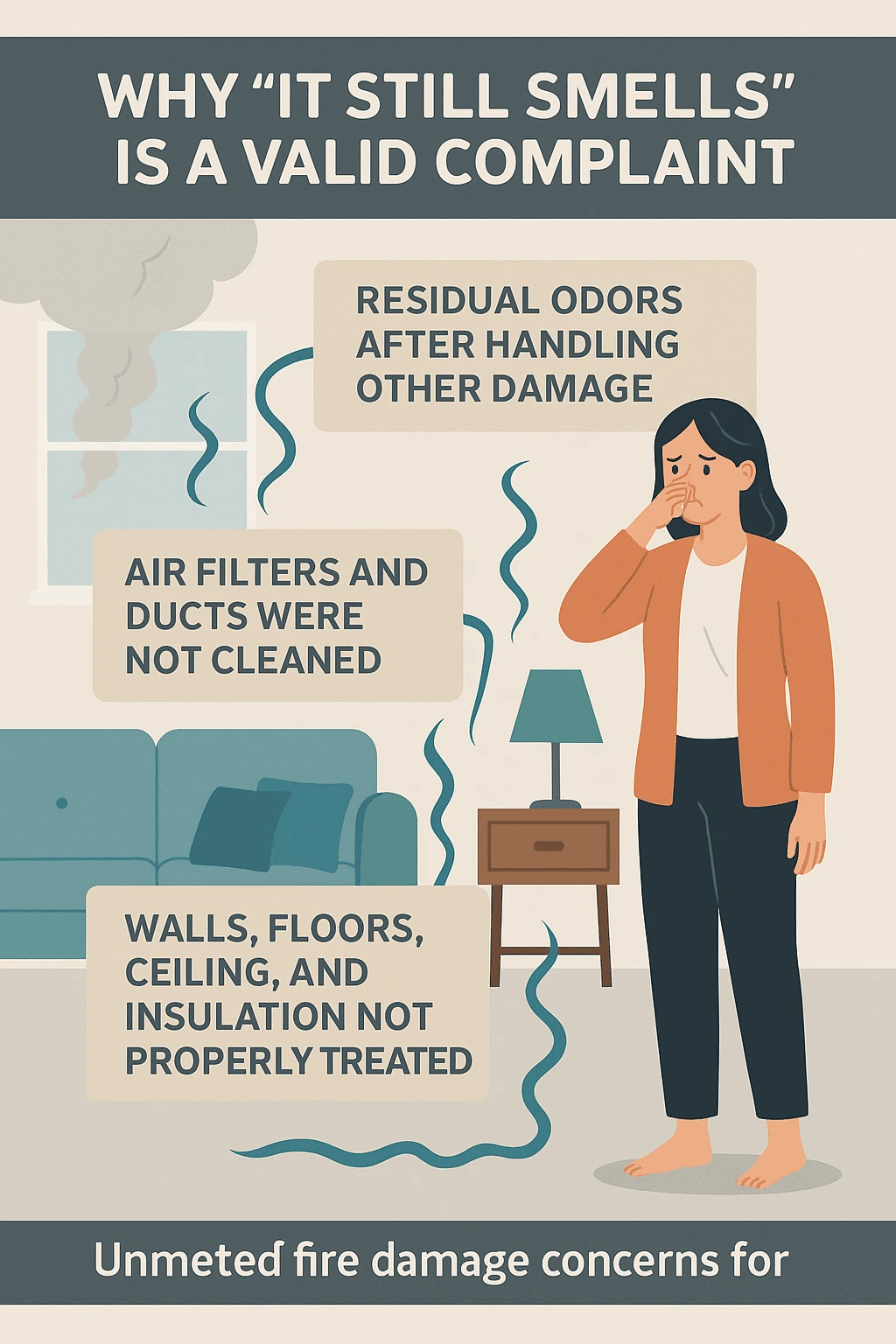The fire is out. The restoration crew came through. But your house still smells like smoke. You’re not imagining it— and you’re not overreacting. There’s real science behind why that odor lingers, and most insurers don’t want to talk about it.
When most people think about fire damage, they picture charred drywall, soot-stained ceilings, and blackened insulation. What they don’t realize is that the most pervasive and long-lasting damage from a fire isn’t always visible—it’s molecular.
If your home still smells like smoke days or even weeks after restoration, it’s not just a matter of cleaning more thoroughly. It’s a sign that the damage has gone deeper than the surface. This is where thermophoresis comes in—a scientific phenomenon few adjusters mention, but every fire claim should consider.
🔬 What Is Thermophoresis?
During a fire, temperatures inside a structure vary rapidly—intense heat near the source, cooler zones farther away. This creates ideal conditions for thermophoresis: a process where microscopic particles, like smoke and soot, migrate from hot air and deposit themselves on cooler surfaces.

This isn’t just a light dusting. Ionized smoke particles don’t simply settle—they’re actively drawn into materials like:
- Drywall
- Insulation
- Wood framing
- Electrical boxes and conduit
- HVAC systems
This invisible migration allows smoke and chemical residues to embed into areas that no surface-level cleaning can reach.
🧪 Ionized Smoke: More Than Just a Smell
The moment materials begin to burn—plastics, fabrics, sealants, paint—they release complex chemical compounds. Many of these are ionized: meaning they carry an electric charge that makes them unusually adhesive and mobile.
Once ionized, smoke becomes more than just an airborne irritant. It becomes a chemical traveler, drawn through outlets, into ductwork, beneath baseboards, and behind drywall. These particles bond chemically with the building itself, creating the persistent, acrid odor homeowners describe long after repairs begin.
This is why your home can be cleared for reentry and still smell like the disaster just happened.
👃 Why “It Still Smells” Is a Valid Complaint
Unfortunately, some insurance adjusters—and even some restoration contractors—treat odor like an afterthought. But persistent smoke odor isn’t cosmetic. It’s a warning sign that smoke and chemical residue still exist in the home.
If the smell lingers, the damage lingers. It means thermophoretic smoke particles have likely penetrated the structure and weren’t fully addressed.
These are not superficial effects. Smoke can:
- Signal ongoing chemical degradation
- Remain trapped in porous surfaces
- Reactivate with heat or humidity
- Affect indoor air quality and health

🧰 What Real Remediation Looks Like
Carriers often aim for what we call “visual clearance.” If it looks clean and smells okay during their walkthrough, they consider the job done. But for properties affected by smoke, true remediation means addressing what’s beneath the surface.
Effective restoration may require:
- Removing contaminated insulation
- Sealing exposed structural wood
- Replacing affected HVAC ductwork
- Using thermal fogging, hydroxyl generators, or ozone treatments
- Applying odor-neutralizing encapsulants to affected framing.

These aren’t upgrades—they’re necessary steps when ionized smoke has permeated the structure. Skipping them can lead to long term odor issues, structural degradation, and even respiratory health concerns.
🧠 Why Carriers Push Back—and Why You Shouldn’t
Restoration at this level costs more. It takes more time. It may involve testing, retesting, and documentation that carriers don’t want to acknowledge. But when your home still smells, when your clothes reek after spending an hour inside, or when your guests ask “Did something burn in here?”—you know something wasn’t handled properly.
We’ve seen insurers approve wipe-downs when sealing was required. We’ve seen HVAC systems left untouched despite direct exposure. And we’ve reversed denials and reopenings by simply explaining the science that was ignored in the initial scope.
✅ If It Still Smells, It’s Not Over
You’re not imagining it. You’re not being sensitive. You’re noticing what the restoration team missed—and what the insurance company doesn’t want to pay for.
At Only Plans Claims & Consulting, we bring both advocacy and scientific literacy to every smoke damage claim. We know what thermophoresis is. We know how to prove its effects. And
we know how to speak the language carriers respond to—because surface-level doesn’t cut it when the real damage is hiding in your walls.
The fire may be out—but the claim isn’t finished until your home is truly clean.






